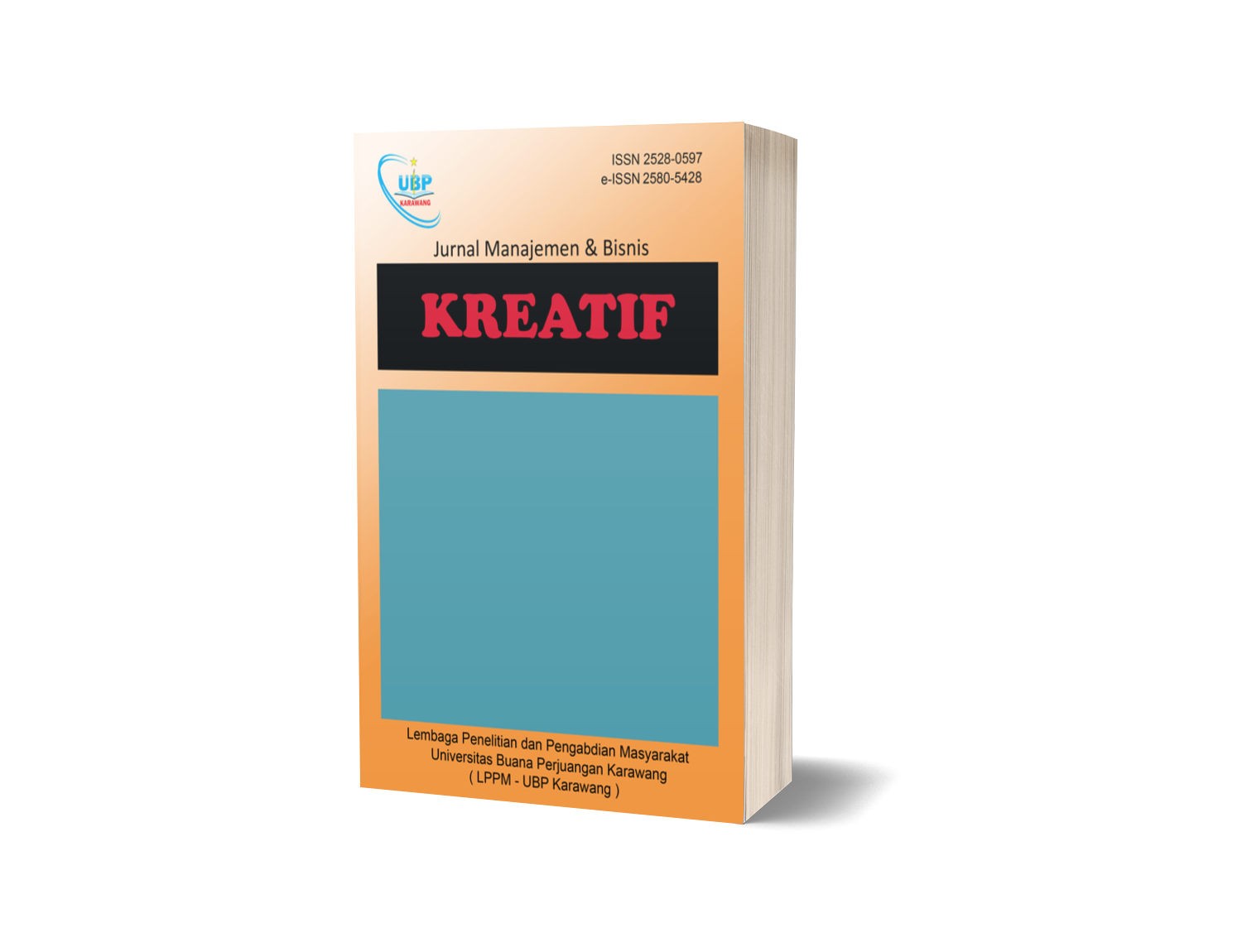GREEN MARKETING APPLICATION STRATEGY FOR INCREASING CONSUMER SATISFACTION (CASE STUDY IN FAST FOOD BUSINESS COMPANY GROUP AT MALL KARAWANG)
DOI:
https://doi.org/10.36805/manajemen.v1i1.85Abstract
Green marketing is not something new in business. Nowdays, environmental issues become the best opportunity in the marketing strategy. Awearness about environtmental and save the earth become one chance from our responsibility. Environmental damage has become everybody concern, including unit business interst fast food at Karawang Mall. In practice, not all units conducting green issues, but most consumer producst using packaging that can biodegrade in a shoorter time. Research purposes to obtain empirical evidence and find clarity phenomena and conclusions about Green Marketing Strategy For Increasing Customer Satisfaction Case Study In Fast Food Business Company Group At Mall Karawang espacially in environmantally friendly food packaging. This research is expected to contribute to the develpment of economics, especially marketing management. Research conducted on 60 speakers as costumers at fast food group at Mall Karawang using qualitative methods with a naturalistic approach. Data is narrative, descriptive, field notes according to interviews and dokumentation, and make conclusions and recomendations. The results of the analysis of research data, it is concluded as follows : 1. Application of green marketing strategies carried out by business in the Mall Karawang were overlooked by the customers due to perceived lack of information. 2. Customer satisfaction is not obtained from the application of the strategy management of green marketing fast food business group at Mall Karawang but service strategy and menu options. 3. Customers tend to come back even if green marketing strategy is not done because of three basic lean namely; taste, price, and prestige. 4. Factors which become obstacles in the implemantation of green marketing strategy for customers is that customera do not understand the importance of the strategy undertaken by the management to maintain environtmental balance. This is due to a lack of understanding of management information to customers is not done continously/ constantly. The results of this study, given some recommandations to the fast food business group in Mall Karawang. Key words : green marketing, implementation of strategy green marketing, eco-friendly food packaging, customer satisfaction.Downloads
References
Angga Bhagya. 2014. Warta Kota. Jakarta Buchari Alma. 2011. Manajemen Pemasaran & Pemasaran Jasa. p. 130 David A. Aaker. 2013. Manajemen Pemasaran Strategi. Salemba Empat. Jakarta. p. 25, 26, 31,32 Edwina Luck& Ayu Ginanti. 2013. Online Environmental Citizenship: Blogs, Green Marketing and Consumer Sentiment in the 21st Century. Electronic Green Journal Eko Sutriyanto. 2011. InSWA. Tribunnews.com. Jakarta. Fabian Durif & Jean Roy. Could Percaived Risks Explain The â€Green Gap†In Green Product Consumtion Electronic Green Journal Fandy Tjiptono & Gregorius Chandra. 2011. Service, Quality & Satisfaction. ANDI. Yogyakarta. p. 105, 292 – 298 Fred R. David. 2012. Manajemen Strategi Konsep. Salemba. Bandung. p. 198 – 203 H.B. Iswanto. 2005. Pengantar Manajemen, Bumiaksara. p. 204 Lexy J. Moleong. 2014. Metodologi Penelitian Kualitatif. Remaja Rosda Karya. Bandung. P . 4-6, 35, 330-332 Manongko, Allen A. Ch. 2011. Tesis. Green Marketing Dan Pengaruhnya Terhadap Keputusan Pembelian Melalui Minat membeli Produk Organik. Marija Ham. 2013. Environtmentally Oriented Marketing Communications As Part Of Green Marketing Strategy Marsella Yeanette Hatane, Adinda Yosari & Felicia Christiana H. 2011 .Evaluation of the Successfulness of A Green Program through Customer Perceived Quality, Brand Image, and Customer Satisfaction: A Case Study at Surabaya Plaza Hotel Md. Saiful Islam. & Iffat Zabin. 2013. Consumer’s Attitude towards Purchasing Green Food. European Journal of Business and Management Michael Jay Polonsky. 1994. An Introduction To Green Marketing. Electronic Green Journal Philip Kotler & Kevin Lane Keller. 2009. Manajemen Pemasaran. Erlangga. Jakarta. P. 135 Ratih Tresnati. 2004. Pengaruh Kinerja Pemasaran Dan Lingkungan Individu Terhadap keputusan Pembelian Serta Dampak Pada Nilai Pelanggan. Disertasi.UNPAD. Rudi Haryadi. 2009. Tesis. Pengaruh Strategi Green Marketing Terhadap pilihan konsumen melalui Pendekatan Marketing Mix (Stusi Kasus pada The Body Shop, Jakarta) Situmorang, R. James. 2011. Pemasaran Hijau Yang Semakin Menjadi Kebutuhan Dalam Dunia Bisnis. Jurnal administrasi bisnis
Suprihatin Ali.2013. Prediksi Perilaku Ramah Lingkungan Yang Dipengaruhi Oleh Nilai Dan Gaya Hidup Konsumen. Sugiyono.2012. Metode Penelitian Kuantitatif, Kualitatif dan R&D. Alfabeta. Bandung. P. 217-219, 246-252, 276277 Susatyo Herlambang. 2013. Pengantar Manajemen, Cara Mudah Memahami Ilmu Manajemen. Gasyen. Sofjan.Assauri. 2011. Manajemen Pemasaran. Dasar, Konsep & Strategi.
| P a g e p. 12, 13 9.2 Peraturan, Kebijakan, dan Buku Pedoman Undang-undang Perlindungan & Pengelolaan Lingkungan Hidup. 2013. Fokusindo Mandiri. Band
Downloads
Published
Issue
Section
License
Authors who publish in Jurnal Manajemen dan Bisnis Kreatif agree to the following terms:
- Authors retain copyright and grant the journal right of first publication with the work simultaneously licensed under a Attribution-ShareAlike 4.0 International (CC BY-SA 4.0) License that allows others to share the work with an acknowledgment of the work's authorship and initial publication in this journal.
- Authors are able to enter into separate, additional contractual arrangements for the non-exclusive distribution of the journal's published version of the work (e.g., post it to an institutional repository or publish it in a book), with an acknowledgment of its initial publication in this journal.
- Authors are permitted and encouraged to post their work online (e.g., in institutional repositories or on their website) prior to and during the submission process, as it can lead to productive exchanges, as well as earlier and greater citation of published work (See The Effect of Open Access).








